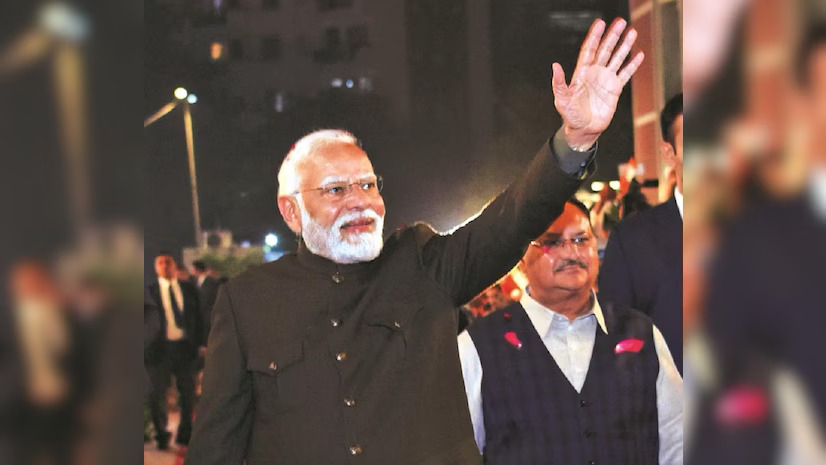Spread over an area of 336.59 acres, with a built-up area of 8000 sq m, the airport has been built at a cost of Rs 250 crore
The Maryada Purushottam Shri Ram International Airport in Ayodhya, to be inaugurated by PM Narendra Modi today, is located strategically and is expected to facilitate travel for devotees and tourists.
Spread over an area of 336.59 acres, with a built-up area of 8000 sq m, the airport has been built at a cost of Rs 250 crore. The design complements the upcoming Ayodhya airport and is a clear departure from the regular airport formats.
According to the chief architect of the Ayodhya airport, Harsh Varshney, the principal architect and director of Sthapati Associates, “The cookie cutter airport buildings are more of glass boxes that we have seen come up in the last decade. The Ayodhya airport building is more responsive to the culture and context of that place. Ayodhya is one of the oldest cities we know, with historical significance for Bharat and India. So we had to create an airport building that would work for Ayodhya so that people can like it, love it, and have some sense of belonging to it. The airport building has been designed to be lit up in the style of diyas on its facade, on all significant cultural and national milestones of the country such as Deepotsav, Independence Day, Republic Day, Gandhi Jayanti, etc.”
With a peak-hour capacity of more than 750 passengers and four aircraft movements per hour, the airport will cater to a large population and accommodate the expected growth. A two-storeyed structure, the Ayodhya Airport is adorned with elevational elements depicting the sacred city’s rich history. “When we are designing an airport building for a pilgrim city versus a metro city, the main difference that we must bear in mind is that people are more attached emotionally and sentimentally to these places. Keeping those sentiments in mind and making those buildings rooted to its context, to its motherland is the most important element in designing for a sensitive place like Kashi or Ayodhya,” said Varshney.
The Ayodhya airport integrates the city’s heritage into its architecture. At the main entrance of the airport, a grand stepped shikar stands tall, adorned with brass. The building follows the Nagara style, outlined with scriptures. The mega columns supporting the terminal roof symbolise the Kandas of Ramayana, blending cultural richness into the airport’s architecture. The Khandika, symbolizing impermanence, coexists with the Deva Gana Patta, embodying divine features. Every column narrates a story of dedication, courage, and spirituality, weaving the city’s essence into the very fabric of the airport. There are artworks from Ramayana, and the terminal building is a canvas of profound messages. The bow and arrow mural symbolises the courage to confront untruth, while hexagonal light particles embody the eternal triumph of truth over hierarchy. From arrivals to skylights, artworks intricately depict the timeless tale of Lord Ram from the Ramayana, creating an immersive, sensory-rich experience beyond traditional airport designs. Strategically placed skylights serve as guiding beacons, enhancing wayfinding and offering a sensory experience for passengers./
Beyond its physical dimensions, the airport comes with GRIHA 4-Star Certification and uses glass-reinforced concrete even though it appears to have used red sandstone. No stones have been used. The Sthapati spokesperson said “We wanted to embark on a carbon-neutral effort, we didn’t want to dig Mother Earth for stone and we wanted to remain sustainable. All the slabs were made in factories, brought to the site and simply installed. The building has been provisioned for numerous disabled-friendly ramps towards the entrance and towards the exit of the building. The facilities such as restrooms are double the size than what is usually there in a normal conventional airport.”
The inauguration will also be attended by the Chief Minister of Uttar Pradesh, Yogi Adityanath, along with the Minister of Civil Aviation, Jyotiraditya M Scindia.
According to the release, IndiGo will be the first airline to operate from the airport, marking Ayodhya as the airline’s 86th domestic destination. The inaugural flight from Delhi to Ayodhya is scheduled to arrive on December 30, this year. Commercial operations for a direct flight between Delhi and Ayodhya will begin on January 6, 2024.




